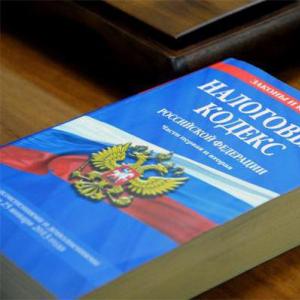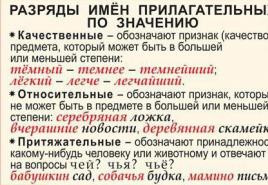Electronic library named after Lenin. Russian State Library. Unified electronic catalog
Registration in the library is free. You can register from the age of 14 (with a passport).
You can take photographs with non-professional equipment. There is wi-fi
Entrance No. 1: marble staircase, rotunda, reading rooms No. 1 and No. 2, reading room of the department of official and normative documents, 3rd floor of the library directorate, including a corridor and hall, meeting room, reading room GSK (General Systematic Catalog), exhibition corridor (“Pink Hall”), dining room.
Entrance No. 3: conference room, corridor near the conference room, exhibition hall (“Blue Hall”).
Pashkov House: reading room of the department of cartographic publications (KGR)
Lots of numbers
The storage space for 41,315,500 copies is the size of 9 football fields.
Each library worker holds 29,830 items.
For a quick, minute look at each of the storage copies, you will have to spend 79 years of life without sleep or rest.
To transport the library's computer park, 25 trucks will be needed.
A unique collection in 367 languages of the world.
Passengers of 4 trains can work simultaneously in the library reading rooms and computerized places.
About 200 new readers sign up here every day.
Almost 4 thousand people come every day.
Russian State Library
There are specialized collections of maps, sheet music, sound recordings, rare books, dissertations, newspapers and other types of publications.
The library's collections have been used by a variety of people for 140 years. Among them: world-famous scientists and students, practitioners and thinkers, our compatriots and foreigners.
The Russian State Library reveals its richest collections through a system of catalogs and card files. An electronic catalog with free online access has been created and is constantly updated. In addition, the RSL prepares union catalogs of Russian books and publishes fundamental scientific and auxiliary bibliographic manuals.
The Russian Lenin Library is the national book depository of the Russian Federation. Among other things, it is the country's leading research institution, methodological and advisory center. The Lenin Library is located in Moscow. What is the history of this institution? Who stood at its origins? How long is the Moscow Lenin Library? This and much more is discussed further in the article.
National Book Depository from 1924 to the present day
The Lenin State Library (whose opening hours will be given below) was formed on the basis of the Rumyantsev Museum. Since 1932, the book depository has been included in the list of research centers of republican significance. In the first days of the 2nd World War, the most valuable funds were evacuated from the institution. About 700 thousand rare manuscripts kept by the Lenin Library were packed and exported. Nizhny Novgorod became a place for the evacuation of valuable meetings. It must be said that Gorky is also home to a fairly large book depository - the main one in the region.
Chronology
Between July 1941 and March 1942, the Lenin Library sent various letters, mostly more than 500, with exchange offers. Consent was received from a number of states. By 1942, the book depository had established book exchange relationships with 16 countries and 189 organizations. Of greatest interest were relations with the USA and England.
By May of the same year, the management of the institution began “certification”, which was completed even before the end of hostilities. As a result, the card files and catalogs were taken into account and brought into proper form. The first reading room of the book depository was opened in 1942, on May 24. The following year, 1943, the department of youth and children's literature was formed. By 1944, the Lenin Library returned valuable funds evacuated at the beginning of the war. In the same year, the Board and Book of Honor were created.

In February 1944, a restoration and hygiene department was established in the book depository. A research laboratory was formed under him. In the same year, issues regarding the transfer of doctoral and master's theses to the book depository were resolved. The active formation of the fund was carried out mainly through the acquisition of antique world and domestic literature. In 1945, on May 29, the book depository was awarded for its outstanding contribution to the storage and collection of publications and serving a wide mass of readers. At the same time, he received medals and orders a large number of employees of the institution.
Development of the book depository in the post-war years
By 1946, the question arose about the formation of a consolidated catalog of Russian publications. On April 18 of the same year, the Lenin State Library became the venue for a reading conference. By the next year, 1947, a regulation was approved that established regulations for the compilation of a consolidated catalog of Russian editions of large book depositories of the Soviet Union.
To carry out this activity, a methodological council was created on the basis of the book depository. It included representatives of various public libraries (named after Saltykov-Shchedrin, the book depository of the Academy of Sciences, and others). As a result of all the activities, the preparation of a database for a catalog of Russian publications of the 19th century began. Also in 1947, an electric train was launched to deliver requirements to the book storage from the reading rooms and a fifty-meter conveyor for transporting publications.

Structural transformations of the institution
At the end of 1952, the Book Depository Charter was approved. In April 1953, in connection with the dissolution of the Committee dealing with the affairs of cultural and educational institutions, and the formation of the Ministry of Culture in the RSFSR, the Lenin Library was transferred to the newly formed department of state administration. By 1955, the cartography sector began issuing and distributing printed cards for incoming atlases and legal deposit maps. At the same time, the international subscription was renewed.
From 1957 to 1958, several reading rooms were opened. In accordance with the Order issued by the Ministry of Culture, an editorial board was established in 1959, whose activities included the publication of library and bibliographic classification tables. During 1959-60, the auxiliary funds belonging to the scientific halls were transferred to open access. Thus, by the mid-60s, the book depository had more than 20 reading rooms with more than 2,300 seats.

Achievements
In 1973, the Lenin Library received the highest award in Bulgaria - the Order of Dmitrov. At the beginning of 1975, a celebration took place to celebrate the fiftieth anniversary of the transformation of the Rumyantsev public book depository into a national one. At the beginning of 1992, the library received Russian status. The following year, 1993, the art publishing department was one of the founders of MABIS (Moscow Association of Art Book Depositories). In 1995, the State Library began the “Memory of Russia” project. TO next year a project to modernize the institution was approved. In 2001, the updated Charter of the book depository was approved. At the same time, new information media were introduced, which significantly changed the technological processes within the library structure.
Book depository funds
The first collection of the library was the Rumyantsev collection. It included more than 28 thousand publications, 1000 maps, 700 manuscripts. One of the first Regulations regulating the work of the book depository stated that the institution should receive all literature that has been and will be published in Russian Empire. So, in 1862, legal deposit began to arrive.
Subsequently, donations and gifts became the most important source of replenishment of funds. At the beginning of 1917, the library stored about 1 million 200 thousand publications. As of January 1, 2013, the volume of the fund is already 44 million 800 thousand copies. This includes serial and periodicals, books, manuscripts, newspaper archives, art publications (including reproductions), early printed samples, as well as documentation on non-traditional information media. The Russian Lenin Library has a universal collection of foreign and domestic documents in more than 360 languages of the world in terms of typological and specific content.

Research activities
The Lenin Library (a photo of the book depository is presented in the article) is the country's leading center in the field of book, library and bibliographic studies. Scientists working at the institution are engaged in the development, implementation and development of various projects. Among them are the “National Fund of Official Documents”, “Recording, Identification and Protection of Book Monuments of the Russian Federation”, “Memory of Russia” and others.
In addition, the development of theoretical and methodological foundations of librarianship and the preparation of methodological and regulatory documentation in the field of library science are constantly underway. The research department is engaged in the creation of databases, indexes, reviews of professional-industrial, scientific-auxiliary, national, advisory nature. Questions on the theory, technology, organization and methodology of bibliography are also discussed here. The library regularly conducts interdisciplinary research into the historical aspects of book culture.

Measures to expand the activities of the book depository
The tasks of the research department of reading and books include analytical support for the functioning of the library as an instrument of information policy of national importance. In addition, the department is developing cultural methods and principles for identifying the most valuable copies of documents and books, introducing recommendations into the practical activities of the institution, developing programs and projects to disclose library collections. At the same time, work is being carried out on the research and practical introduction of methods for restoration and conservation of library documentation, examination of storage facilities, methodological and consulting activities.
Modern Lenin Library
The official website of the institution contains information about the history of the origin and development of the book depository. Here you can also get acquainted with catalogues, services, events and projects. The institution is open from Monday to Friday from 9 am to 8 pm, on Saturday from 9 am to 7 pm. Closed on Sunday.
The library today operates a training center for additional and postgraduate vocational education specialists. Activities are carried out on the basis of a license from the Federal Service for Supervision in the Field of Science and Education. The center operates a postgraduate school that trains personnel in the specialties of book science, bibliography and library science. The Dissertation Council operates in the same areas, whose competence includes awarding the academic degrees of Doctor and Candidate of Pedagogical Sciences. This department is allowed to accept works of specialization in educational and historical sciences for defense.

Recording Rules
All citizens can use the reading rooms (of which there are 36 in the book depository today) - as Russian Federation, so foreign countries- upon reaching eighteen years of age. The registration is made in an automated mode, which provides for the issuance of a plastic ticket to readers, which contains a personal photograph of the citizen. To obtain a library card, you must present a passport with registration (or for students - an academic record book or student card, for those who have graduated from a university - a document on education.
Remote and online registration
The library operates a remote recording system. In this case, an electronic library card is created. Foreign citizens will need an identification document translated into Russian to register. To register an electronic ticket, a person will have to send the entire package of necessary papers by mail. In addition, online registration is available. It is available to registered readers on the site. Online registration is carried out from your Personal Account.
July 1, 2012 marks the 150th anniversary of the founding of the Russian State Library.
The Moscow Public Library (now the Russian State Library, or RSL) was founded on July 1 (June 19, old style) 1862.
The collection of the Russian State Library originates from the collection of Count Nikolai Rumyantsev (1754-1826), which included more than 28 thousand books, 710 manuscripts, and more than 1000 maps. The collection belonged to the private museum of the count, which he created in St. Petersburg. After Rumyantsev’s death, his brother turned to Emperor Nicholas I with a request to accept the gift and transfer the museum and library with manuscript and book collections to the government. By decree of the emperor, the museum became known as Rumyantsevsky.
The St. Petersburg period in the history of the Rumyantsev Museum and its library ended in 1861, when, on the initiative of Muscovites who wanted to organize a public library in the city, it was decided to transfer the collection to Moscow. The library was housed in a building built by the Russian architect Vasily Bazhenov next to the Kremlin at the end of the 18th century and known as the Pashkov House.
This building still belongs to the library. department of manuscripts, where 600 thousand written and graphic monuments are stored, the oldest of which date back to the 7th century. There is also a department of music publications and sound recordings and a cartographic department.
Officially, the founding date of the Russian State Library is considered to be July 1, 1862, when by decree of Emperor Alexander II the staff and budget of the library were approved, and the library’s receipt of one legal copy of all printed materials published in Russia was legalized. In addition to mandatory receipts, the library fund was replenished through gifts and donations. Thus, the collection of books by the Minister of Public Education Avraam Norov, donated to the library, numbered 16,000 books. This collection included publications of Greek and Roman writers, works by Machiavelli, a unique collection of Giordano Bruno’s lifetime publications with an autograph on one of the books, Russian scientific monographs of the first half of the 19th century - the collection is still one of the most valuable in the fund libraries.
Hundreds of collections, individual books, and manuscripts came to the library from donors, among whom were the merchant and publisher Kozma Soldatenkov, the scientist Fyodor Chizhov, the bibliophile and musicologist Vladimir Odoevsky, the son of Alexander Pushkin Alexander, the daughter of Leo Tolstoy Sophia and many others.
For almost a century, from the late 20s of the 19th century to the beginning of the 20s of the 20th century (in the St. Petersburg and Moscow periods), the library functioned as part of a complex that kept the name of the Rumyantsev Museum unchanged in its official names.
The library of the Moscow Public and Rumyantsev Museums has become a true cultural center. Artistic works and scientific works were created in its reading rooms. The library's readers included Leo Tolstoy, Fyodor Dostoevsky, Anton Chekhov, and Vladimir Korolenko.
On January 29, 1992, by decree of the President of Russia, the State Library of the USSR named after V.I. Lenin was transformed into the Russian State Library (RSL).
In the second half of the 1990s, libraries began to use automated systems bibliographic search and creation of electronic catalogs.
The Russian State Library is a participant in the UNESCO Memory of the World program, designed to protect the world's documentary heritage and, to the extent possible, ensure wide access to it. In 1997, at the request of the Russian State Library, several library collections and individual books recognized as world documentary heritage were included in the international Memory of the World register: the Arkhangelsk Gospel of 1092, the Khitrovo Gospel, Slavic editions of the Cyrillic font of the 15th century, a collection of maps of the Russian Empire of the 18th century, Russian posters of the late 19th - early 20th centuries.
In 2000, the main book depository of the library was closed for reconstruction, related, among other things, to the need for its technical re-equipment. In 2003, the reconstruction was completed, but this did not solve the problem of lack of space to accommodate the library collection. The capabilities of its storage facilities were exhausted by the beginning of the 80s of the twentieth century. Since then, the library has been replenished annually with 300 - 500 thousand publications.
In 2007, the construction of a new building of the Russian State Library was included in the list of construction projects and facilities for federal needs for 2008-2010 by order of the Government of the Russian Federation.
The new building of the Russian State Library is behind the main building, on Vozdvizhenka Street. Construction is expected to begin this year, 2012.
Within the walls of the Russian State Library there is a unique collection of domestic and foreign documents in 367 languages. The volume of the fund exceeds 43 million storage units. There are specialized collections of maps, sheet music, sound recordings, rare books, dissertations, newspapers and other types of publications.
Russian State Library(FGBU RSL) - national library of the Russian Federation, the largest public library in Russia and continental Europe and one of the largest libraries in the world; a leading research institution in the field of library science, bibliography and bibliology, a methodological and advisory center for Russian libraries of all systems (except for special and scientific-technical ones), a center for recommendatory bibliography.
Encyclopedic YouTube
Story
Library of the Rumyantsev Museum
The Rumyantsev Museum, established in 1828 and founded in 1831 in St. Petersburg, has been part of the Imperial Public Library since 1845. The museum was in dire straits. The curator of the Rumyantsev Museum V.F. Odoevsky proposed to transport the Rumyantsev collections to Moscow, where they would be in demand and preserved. Odoevsky’s note about the difficult situation of the Rumyantsev Museum, sent to the Minister of the State Household, was “accidentally” seen by N.V. Isakov and gave it a go.
The custodians of the department of manuscripts and early printed books, with which the library was especially closely connected throughout its history, were A. E. Viktorov, D. P. Lebedev, S. O. Dolgov. D. P. Lebedev in -1891 was first A. E. Viktorov’s assistant in the department of manuscripts, and after Viktorov’s death he replaced him as keeper of the department.
In the same year, a 50-meter vertical conveyor for transporting books came into operation, an electric train and a conveyor belt were launched to deliver requests from the reading rooms to the book depository. Work has begun to serve readers with photocopies. To read microfilms, a small office was set up, equipped with two Soviet and one American machines.
V.I. Nevsky ensured that the authorities decided on the need for construction. He also laid the first stone in the foundation of the new building. It became the standard of the “Stalinist Empire style”. The authors combined Soviet monumentalism and neoclassical forms. The building harmoniously fits into the architectural surroundings - the Kremlin, Moscow University, Manezh, Pashkov House.
The building is lavishly decorated. Between the pylons of the facade there are bronze bas-reliefs depicting scientists, philosophers, writers: Archimedes, Copernicus, Galileo, I. Newton, M. V. Lomonosov, C. Darwin, A. S. Pushkin, N. V. Gogol. The sculptural frieze above the main portico was made mainly according to the drawings of academician of architecture and theater artist V. A. Shchuko. M. G. Manizer, N. V. Krandievskaya, V. I. Mukhina, S. V. Evseev, V. V. Lishev took part in the design of the Library. The conference hall was designed by architect A.F. Khryakov.
Limestone and solemn black granite were used for cladding the facades, and marble, bronze, and oak wall panels for the interiors.
In 1957-1958, the construction of buildings “A” and “B” was completed. The war prevented all work from being completed on time. The construction and development of the library complex, which included several buildings, lasted until 1960.
In 2003, an advertising structure in the form of the Uralsib company logo was installed on the roof of the building. In May 2012, the structure, which became “one of the dominant features of the appearance of the historical center of Moscow,” was dismantled.
Main book depository
Library collections
The collection of the Russian State Library originates from the collection of N.P. Rumyantsev, which included more than 28 thousand books, 710 manuscripts, and more than 1000 maps.
The “Regulations on the Moscow Public Museum and the Rumyantsev Museum” stated that the director is obliged to ensure that the Library of Museums includes all literature published on the territory of the Russian Empire. Thus, since 1862, the Library began to receive legal deposit. Before 1917, 80% of the fund came from legal deposit receipts. Donations and donations have become the most important source of replenishment of the fund.
A year and a half after the founding of the Museums, the Library’s fund amounted to 100 thousand items. And on January 1 (13), 1917, the Library of the Rumyantsev Museum had 1 million 200 thousand items of storage.
At the time of the start of the work of the Interdepartmental Commission, headed by Glavlit of the USSR, to revise publications and rearrange them from special storage departments to open funds in 1987, the fund of the special storage department totaled about 27 thousand domestic books, 250 thousand foreign books, 572 thousand issues of foreign magazines, about 8.5 thousand annual sets of foreign newspapers.
Central fixed fund has more than 29 million storage units: books, magazines, ongoing publications, documents for official use. It is the basic collection in the subsystem of the main document collections of the RSL. The fund was formed on the basis of the collection principle. Of particular value are more than 200 private book collections of domestic figures of science, culture, education, outstanding bibliophiles and collectors of Russia.
Central Reference and Bibliographic Fund has more than 300 thousand storage units. The content of the documents included in it is universal in nature. The fund contains a significant collection of abstract, bibliographic and reference publications in Russian, languages of the peoples of the Russian Federation and foreign languages(except for the eastern ones). The collection widely includes retrospective bibliographic indexes, dictionaries, encyclopedias, reference books, and guidebooks.
Central auxiliary fund compiles and quickly provides readers in open access with the most popular printed publications in Russian, published by central publishing houses in Moscow and St. Petersburg. The fund has a large collection of scientific, reference and educational literature. In addition to books, it includes magazines, brochures, and newspapers.
RSL Electronic Library is a collection of electronic copies of valuable and most requested publications from the collections of the Russian State Library, from external sources and documents originally created in electronic form. The volume of the fund at the beginning of 2013 is about 900 thousand documents and is constantly being updated. The full range of resources is available in the reading rooms of the RSL. Access to documents is provided in accordance with Part IV of the Civil Code of the Russian Federation.
The RSL electronic library contains open access resources that can be freely read on the Internet from anywhere globe, and limited access resources that can only be read within the walls of the RSL, from any reading room.
There are about 600 Virtual Reading Rooms (VRR) operating in Russia and the CIS countries. They are located in national and regional libraries, as well as in libraries of universities and other educational institutions. VChZ provide the opportunity to access and work with RSL documents, including restricted access resources. Provides this functionality software DefView is the predecessor of the more modern Vivaldi network of digital libraries.
Manuscript Fund is a universal collection of written and graphic manuscripts on different languages, including Old Russian, Ancient Greek, Latin. It contains handwritten books, archival collections and funds, personal (family, ancestral) archives. Documents, the earliest of which date back to the 6th century AD. e., made on paper, parchment, and other specific materials. The fund contains the rarest handwritten books: the Arkhangelsk Gospel (1092), the Khitrovo Gospel (late 14th - early 15th centuries), etc.
Fund of rare and valuable publications has more than 300 thousand storage units. It includes printed publications in Russian and foreign languages that correspond to certain social and value parameters - uniqueness, priority, memoriality, collectibility. The fund, according to the content of the documents included in it, is universal in nature. It presents printed books from the mid-16th century, Russian periodicals, including the Moskovskie Gazette (from 1756), publications by the pioneer Slavic printers Sh. Fiol, F. Skorina, I. Fedorov and P. Mstislavets, collections of incunabula and paleotypes , first editions of the works of J. Bruno, Dante, R. G. de Clavijo, N. Copernicus, archives of N. V. Gogol, I. S. Turgenev, A. P. Chekhov, A. A. Blok, M. A. Bulgakova and others.
Dissertation Fund includes domestic doctoral and master's theses in all branches of knowledge, except medicine and pharmacy. The collection contains author's copies of dissertations from the 2010s, as well as microforms of dissertations made to replace the originals from the 1950s. The fund is retained as part cultural heritage Russia.
Newspaper Foundation, which includes more than 670 thousand storage units, is one of the largest collections in Russia and the post-Soviet space. It includes domestic and foreign newspapers published since the 18th century. The most valuable part of the fund are Russian pre-revolutionary newspapers and publications from the first years of Soviet power.
Military Literature Foundation has more than 614 thousand storage units. It includes printed and electronic publications in Russian and foreign languages. Wartime documents are presented - front-line newspapers, posters, leaflets, the texts for which were composed by the classics of Soviet literature I. G. Erenburg, S. V. Mikhalkov, S. Ya. Marshak, M. V. Isakovsky.
Foundation of Literature in Oriental Languages(countries of Asia and Africa) includes domestic and the most scientifically and practically significant foreign publications in 224 languages, reflecting the diversity of topics, genres, and types of printing design. The sections on socio-political and humanities. It includes books, magazines, ongoing publications, newspapers, and speech recordings.
Specialized collection of current periodicals formed to quickly serve readers with current periodicals. Doublet copies of Russian periodicals are in the public domain. The fund contains domestic and foreign magazines, as well as the most popular central and Moscow newspapers in Russian. Upon expiration of the established period, the journals are transferred for permanent storage to the Central Fixed Fund.
Art publications fund, numbering about 1.5 million copies. This collection includes posters and prints, engravings and popular prints, reproductions and postcards, photographs and graphic materials. The Foundation introduces in detail the personal collections of famous collectors, including portraits, bookplates, and works of applied graphics.
Fund of cartographic publications has about 250 thousand storage units. This specialized collection, including atlases, maps, plans, map diagrams and globes, provides material on topics, types of publications of this kind and forms of presentation of cartographic information.
Fund of music publications and sound recordings(more than 400 thousand items) is one of the largest collections, representing all the most significant in the world repertoire, starting from the 16th century. The music fund contains both original documents and copies. It also includes documents for electronic media. The sound recording fund contains shellac and vinyl records, cassettes, tapes from domestic manufacturers, DVDs.
Fund of official and normative publications is a specialized collection of official documents and publications international organizations, government bodies and management of the Russian Federation and individual foreign countries, official regulatory and production documents, publications of Rosstat. The total volume of the fund exceeds 2 million storage units, presented in paper and electronic forms, as well as on other micro-media.
IN fund of Russian literature abroad, numbering more than 700 thousand items, presents works by authors from all waves of emigration. Its most valuable component is the collection of newspapers published on the lands occupied by the White Army during the Civil War, others were published in the occupied territories of the USSR during the Great Patriotic War. The fund stores the works of figures of the domestic human rights movement.
Network Foundation remote resources has more than 180 thousand items. It includes resources of other organizations posted on remote servers, to which the library provides permanent or temporary access. In terms of the content of the documents included in the fund, it is universal in nature.
Collection of publications on optical CDs(CD and DVD) - one of the youngest collections of RSL documents. The fund contains more than 8 thousand storage units various types and appointments. Includes text, audio and multimedia documents that are original publications or electronic analogues of printed publications. The content of the documents included in it is universal in nature.
Literature Fund for Library Science, Bibliography and Bibliology is the world's largest specialized collection of this kind of publications. It also includes language dictionaries, encyclopedias and general reference books, literature on related fields of knowledge. The 170 thousand documents available to the fund cover the period from the 18th century to the present. Publications from the Russian State Library are included in a separate collection.
Microform Working Copy Fund has about 3 million storage units. It includes microforms of publications in Russian and foreign languages. Partially presented are microforms of newspapers and dissertations, as well as publications that do not have paper equivalents, but meet such parameters as value, uniqueness, and high demand.
Intrastate Book Exchange Fund, part of the subsystem of exchange funds of the Russian State Library, has more than 60 thousand storage units. These are doublet and non-core documents excluded from the fixed assets - books, brochures, periodicals in Russian and foreign languages. The fund is intended for redistribution through gift, equivalent exchange and sale.
Fund of unpublished documents and deposited scientific works on culture and art has more than 15 thousand storage units. It includes deposited scientific works and unpublished documents - reviews, abstracts, certificates, bibliographies, methodological and methodological-bibliographic materials, scripts for holidays and mass performances, materials of conferences and meetings. The foundation's documents are of great industry-wide importance.







